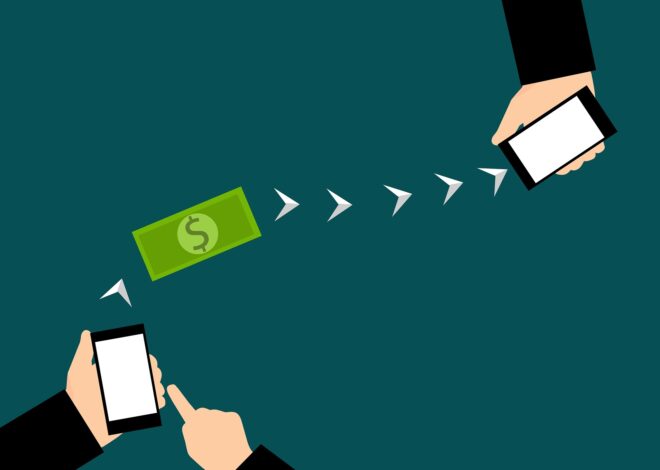
Mortgages 101 What First-Time Home Buyers Need to Know
Understanding Mortgages: The Basics
A mortgage is a type of loan that is used to finance the purchase of a property. This could be a house, an apartment, a commercial property, or land. Mortgages are offered by banks and other financial institutions.
When you take out a mortgage, the property you’re buying serves as collateral. This means that if you fail to make your mortgage payments, the lender can take possession of the property through a process known as foreclosure.
Mortgages are typically paid back over a long period, usually 15 to 30 years. Each payment goes towards paying off a portion of the principal (the original loan amount) and the interest (the cost of borrowing the money).
There are two main types of mortgages: fixed-rate and adjustable-rate. With a fixed-rate mortgage, the interest rate stays the same for the entire term of the loan. With an adjustable-rate mortgage, the interest rate can change periodically.
The amount you can borrow and the interest rate you receive on a mortgage are determined by several factors, including your credit score, income, and the size of your down payment.
Remember, taking on a mortgage is a significant financial decision. It’s important to understand the terms of your mortgage and ensure that the monthly payments are affordable for you.
Types of Mortgages: Which One is Right for You?
There are several types of mortgages available, each with its own advantages and disadvantages. Understanding these can help you choose the one that best suits your financial situation and long-term goals.
Fixed-Rate Mortgages: This is the most common type of mortgage. The interest rate remains the same for the entire term of the loan, which means your monthly payment stays the same. This can be a good option if you plan on staying in your home for a long time and prefer the stability of knowing exactly what your payment will be.
Adjustable-Rate Mortgages (ARMs): With an ARM, the interest rate can change over time, usually in relation to an index, and so does your monthly payment. ARMs often offer a lower initial interest rate than fixed-rate mortgages. This can be a good option if you plan on moving or refinancing before the rate adjusts.
Interest-Only Mortgages: With this type of mortgage, you only pay the interest on the loan for a certain number of years. After that, you start to pay off both the principal and the interest. This can initially result in lower monthly payments, but you won’t make any progress on paying down the principal.
FHA Loans: These are loans insured by the Federal Housing Administration. They’re designed to help first-time homebuyers and those with lower credit scores or smaller down payments. FHA loans typically allow for lower down payments and have more lenient credit requirements than conventional loans.
VA Loans: These are loans guaranteed by the Department of Veterans Affairs. They’re available to veterans, service members, and certain military spouses. VA loans offer competitive rates, and often require no down payment or private mortgage insurance.
Remember, the right mortgage for you depends on your individual circumstances, including your current financial situation and long-term plans.
The Mortgage Application Process: A Step-by-Step Guide
- Preparation: Before you apply for a mortgage, it’s important to review your credit report, correct any errors, and understand your credit score. You should also gather necessary financial documents such as pay stubs, tax returns, and bank statements.
- Pre-Approval: This is an optional step where a lender reviews your finances and tells you how much they might be willing to lend. A pre-approval can make you more attractive to sellers.
- Choosing a Lender and Loan Program: Research various lenders, loan programs, and interest rates to find the best fit for your situation. Consider both the terms of the loan and the customer service of the lender.
- Application: Once you’ve chosen a lender and a loan program, you’ll fill out the mortgage application. This will include information about your income, assets, debts, and a description of the property.
- Loan Estimate: After you apply, the lender will give you a Loan Estimate. This document outlines the terms of the loan, including the interest rate, monthly payment, and total closing costs.
- Processing and Underwriting: The lender will review your application and verify your financial information. They may also order a home appraisal to confirm the value of the property.
- Closing: If your application is approved, you’ll move to closing. This is when you’ll sign the final mortgage documents and officially take ownership of the property.
Remember, the mortgage application process can be complex, but understanding each step can make it easier to navigate.

Interest Rates and APR: What You Need to Know
Interest rates and the Annual Percentage Rate (APR) are two of the most important aspects of a mortgage that you need to understand.
- Interest Rate: This is the cost of borrowing the principal loan amount. It can be fixed or variable, depending on your loan type. The interest rate is expressed as a percentage of the loan amount. The lower the interest rate, the less you’ll pay over the life of the loan.
- Annual Percentage Rate (APR): The APR is a broader measure of the cost of borrowing money. It includes the interest rate and other costs associated with the loan, such as lender fees. The APR is expressed as a percentage and is usually higher than the interest rate. The APR gives you a better idea of the true cost of the loan.
Remember, when comparing mortgage offers, look at both the interest rate and the APR. The interest rate will tell you how much interest you will pay, and the APR will give you a picture of the total cost of the loan.
Mortgage Fees and Closing Costs: Hidden Expenses of Home Buying
When buying a home, it’s important to understand that the mortgage amount is not the only cost involved. There are several other fees and costs, often referred to as closing costs, that can significantly add to the overall expense of home buying. Here are some of the most common ones:
1. Origination Fee: This is a fee charged by the lender to process a new loan application. It’s typically about 0.5% to 1% of the total loan amount.
2. Appraisal Fee: Before a lender offers a mortgage, they will require an appraisal of the property to ensure the home is worth the amount being borrowed. This fee can range from $300 to $500.
3. Inspection Fee: A home inspection is usually required to check for potential problems with the home. This can cost several hundred dollars depending on the size and location of the property.
4. Title Search and Insurance: A title search ensures that the seller is the rightful owner of the property, and title insurance protects the lender and buyer against any future claims to the property. These costs can vary widely but are often around $1000.
5. Recording Fees: These are fees charged by your local city or county for recording the new deed and mortgage.
6. Underwriting Fee: This is a fee charged by the lender for evaluating and verifying the borrower’s loan application. This fee can vary but is typically a few hundred dollars.
7. Private Mortgage Insurance (PMI): If your down payment is less than 20% of the home’s price, you’ll likely have to pay PMI. This can be anywhere from 0.5% to 1% of the entire loan amount annually.
8. Prepaid Expenses: These are costs that are paid in advance, such as homeowners insurance, property taxes, and mortgage interest that will accrue between the closing date and the date of your first mortgage payment.
Remember, these costs can add up quickly, so it’s important to factor them into your budget when considering how much home you can afford. Always ask your lender for a detailed list of closing costs so you know what to expect and can negotiate if necessary. It’s also a good idea to set aside additional funds to cover these costs to avoid any surprises at closing.
Tips for First-Time Home Buyers: Navigating the Mortgage Landscape
Navigating the mortgage landscape can be daunting for first-time home buyers. Here are some tips to help you through the process:
1. Understand Your Credit Score: Your credit score plays a crucial role in determining the interest rate on your mortgage. The higher your score, the better the terms you can get from lenders. Make sure to check your credit report for any errors and work on improving your score before applying for a mortgage.
2. Save for a Down Payment: While it’s possible to get a mortgage with a small down payment, a larger down payment can lower your monthly payments and potentially eliminate the need for private mortgage insurance.
3. Get Pre-Approved: Before you start house hunting, get pre-approved for a mortgage. This will give you an idea of how much you can afford and show sellers that you’re a serious buyer.
4. Shop Around: Don’t just go with the first lender you find. Shop around and compare rates and terms from several lenders to ensure you’re getting the best deal.
5. Understand the Total Cost: Remember to factor in closing costs, property taxes, insurance, and maintenance when calculating the total cost of owning a home.
6. Consider a Fixed-Rate Mortgage: If you plan on staying in your home for a long time, a fixed-rate mortgage can provide stability and predictability with your payments.
7. Be Patient: The home buying process can take time. Be patient, and don’t rush into buying a home until you find one that meets your needs and fits your budget.
Remember, buying a home is a significant financial decision. Take your time, do your research, and make sure you fully understand the mortgage process before you make a commitment.









Today, with the fast life style that everyone is having, credit cards have a huge demand throughout the economy. Persons throughout every area of life are using the credit card and people who aren’t using the credit cards have arranged to apply for one. Thanks for expressing your ideas in credit cards.
Your articles are very helpful to me. May I request more information?